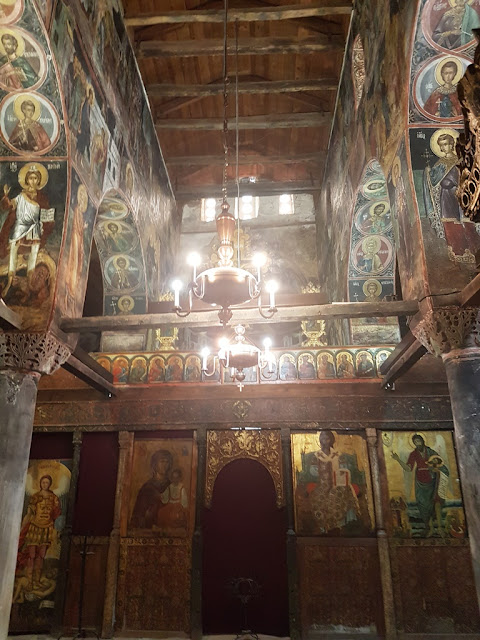All over the world the seas create islandic or peninsular forms. People tended to settle in such places for thousands of years, because they were easy to defend, great for fishing, trade and travels and very picturesque.
Today we will visit a place like this that lies on the Bulgarian coast of the Black Sea. Ladies and gentleman, welcome to Nesebar.
It is a city that is inhabited for more than 3 thousands years. Thracians, Greeks, Romans, Byzantines, Bulgars and Ottoman Turks have lived here. Please take a look on the three dimensional plan of the city. We will enter through the man-made isthmus on the right.
This is how the Nesebar's Old Town looks from the main coast. Do you see the wooden building on the left of the road leading there ?
Yes, you are correct. It is a wooden windmill
And here are the ruins of the city walls and the main entrance to the city. Have you noticed the table on the right ?
There are various reasons why Nesebar is on the UNESCO World Heritage List. One of them is that it has highest number of churches per capita. There are 40 churches in the old town and there were moments in the city history when less than 2000 people used to live here.
The oldest church in the city is Church of St Sophia or the Old Bishopric (Stara Mitropoliya) bulit in fifth and sixth centuries.
If you look for a church with a roof, let's find something more modern. The one below is called Church of St Stephen or the New Bishopric (Nova Mitropoliya) and comes from the tenth century.
Although to be precise, the mural paintings come from sixteenth century.
The paintings outside are quite impressive.
Let's go inside.
Have you noticed similarity to the King's Chappel in Lublin? And Nesebar is over a thousand kilometers away from Lublin!
Please also admire the medieval pulpit.
The church below is the best preserved medieval church in whole Bulgaria - Church of Christ Pantocrator, from thirteenth and fourteenth century. The facade walls are decorated with various geometrical patterns from bricks and stone cubes, which is called ceramic plastic style and it is typical for most late medieval churches in Nesebar.

The building in front of us is Church of St. John's Aliturgetos. Aliturgetos means "not consecrated". The legend says that one of the builders fell down and was killed. The church canon did not allow a place where a man had been killed to be used for worship. In my opinion it is the most beautiful church in the city, at least from this side.
Because from the other side it does not look that impressive. Please look at the top of the stairs.
But Nesebar is not only about sacral buildings. There are also civil ones, like the Ancient Theatre.

Medieval Battle Tower.
Picturesque small streat giving shadow during sunny days.
Or modern oficial buildings like this city hall.
But let's not forget that the warm and calm Black Sea is everywhere around the island.
There you can spend whole day lying in the sun under umbrella.
Talk to the seagulls.

Or eat a lunch in a family restaurant where you can be sure the hosts speak your language, whatever it is, English, German, Italian, Bulgarian, Russian, Polish, etc. At least a few words.

But since the sunset is coming let's go to the next fantastic Bulgarian locations.






















No comments:
Post a Comment